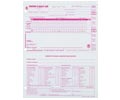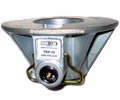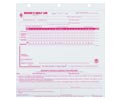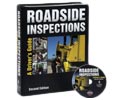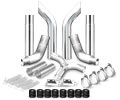Tougher enforcement – Main focus of the "new" OSHA
June 8, 2010
Since the new OSHA administration took over early last year, there has been a huge shift toward stronger enforcement. More staff has been added. Policies have been changed. Fines have been higher. And, talk has been tough. To borrow from Secretary of Labor Hilda Solis' words, OSHA is acting like a "sheriff" now.
That means it is more important than ever for employers to ensure they are in compliance with OSHA requirements. Even the requirements that don't have a direct relationship to injury and illness prevention, for example injury and illness recordkeeping, are being cited at an increased rate with tougher penalties (e.g., $110,000 in proposed penalties to a company for continually failing to document and report employee injuries and illnesses).
Changes to the penalty system
In addition to adding more enforcement personnel and conducting thorough inspections, OSHA is also changing the way it assesses and reduces penalty amounts during the citation process. In the past, OSHA has reduced penalties for such things as good history and good faith — so, a single cited violation that started out with $5,000 in proposed penalties may have ended up at only $1,000. Under the planned changes, this same $5,000 initial proposed penalty might end up costing employers $3,000.
To accomplish the penalty increase, OSHA is anticipating making several policy changes in the coming months, including:
- Size reductions will be lessened by 10 to 20 percent. For example, employers with 1-25 employees will be eligible only for a 40 percent penalty reduction, down from 60 percent.
- Tougher criteria for getting a reduction based on good history. OSHA plans to start looking at a five-year period, rather than just a three-year period, meaning employers will have to have a good track record for a longer period of time to be eligible for the 10 percent reduction based on history.
- A new history increase will be established. Employers that have been cited by OSHA for any high gravity serious, willful, repeat, or failure-to-abate violation within the previous five years will receive a 10 percent increase in their penalty, up to the statutory maximum.
- The time period for repeat violations will be increased. In the past, OSHA only looked at a three-year window when determining if a "repeat" violation — which carries a higher penalty — had occurred. This will be increased to a five-year window.
- The minimum proposed penalty for a serious violation will be increased. In the past, the minimum was $100; this will be raised to $500.
- The proposed minimum penalty for a posting violation will be increased. It will jump to $250 if the employer has previously been provided a poster by OSHA.
OSHA is also asking Congress to pass legislation, the Protecting America's Workers Act, that would raise maximum penalties even further, up to $250,000 for certain violations.
Severe Violator Enforcement Program
In addition to changing the penalty structure, OSHA is also launching a new enforcement program geared toward what the agency calls "severe violators." This program, known as SVEP or Severe Violator Enforcement Program, is intended to focus OSHA enforcement resources on "recalcitrant" employers who fail to meet their obligations under the OSH Act. This program includes:
- More mandatory inspections of an identified company
- Mandatory follow-up inspections, including inspections at other locations of the same company
- More intense examination of an employer's history to assess if there are systemic problems that would trigger additional mandatory inspections.
What can you do?
As you can see, OSHA is very focused on enforcement. And, this is only expected to increase as the newly-hired OSHA enforcement staff get up and running. It is crucial that employers prepare now, in case OSHA comes knocking. But what can you do? A few actions you can take now to help get you through an inspection include the following:
- Know the regulations that apply to your workplace. For most workplaces under Federal OSHA jurisdiction, this means 29 CFR 1904 for recordkeeping of injuries and illnesses, and 29 CFR Part 1910 for General Industry safety and health requirements and 29 CFR Part 1926 for Construction safety and health requirements.
- Audit your operations. Better for you to find compliance issues, than for OSHA.
- Establish an injury and illness prevention program. OSHA is looking at this as a future requirement, but it may make good sense now. Essentially this means developing a written program that outlines the hazards in your facility and how you will control them. This is another way to "find and fix" hazards before OSHA finds them. It's also an eligibility requirement for receiving the "good faith" penalty reduction if cited by OSHA.
- Keep accurate injury and illness records. OSHA is focused heavily on ensuring employers are not underreporting. Also, be very careful with incentive programs. OSHA is taking a hard look at these types of programs if they are tied to the reporting or occurrence of an injury.
- Focus on the Big Four hazards, which are falls, electrocutions, caught-in or between, and struck by. OSHA is placing increased focus on these hazards, which are the leading causes of fatalities.
- Keep an eye on National Emphasis Programs (NEPs). These issues are particularly important as they are often tied to serious dangers with widespread impact. Currently, there are NEPs on injury/illness recordkeeping, hexavalent chromium, amputations (hazardous machinery), combustible dust, lead, crystalline silica, ship breaking, trenching/excavations, petroleum refinery and chemical facility process safety management, and food flavorings (diacetyl) manufacturers.
- Ensure employees are trained for the tasks that they perform Also, make certain training is presented in an understandable manner. This is another focus of the new OSHA.
- Keep good communication with your other locations. If one of your locations receives an OSHA inspection and is cited, depending on the nature of the violations and operations, other locations may be put on OSHA's radar for inspection. OSHA is looking for patterns of violations or systemic problems within a company.
Highly Recommended
Track Your Order




